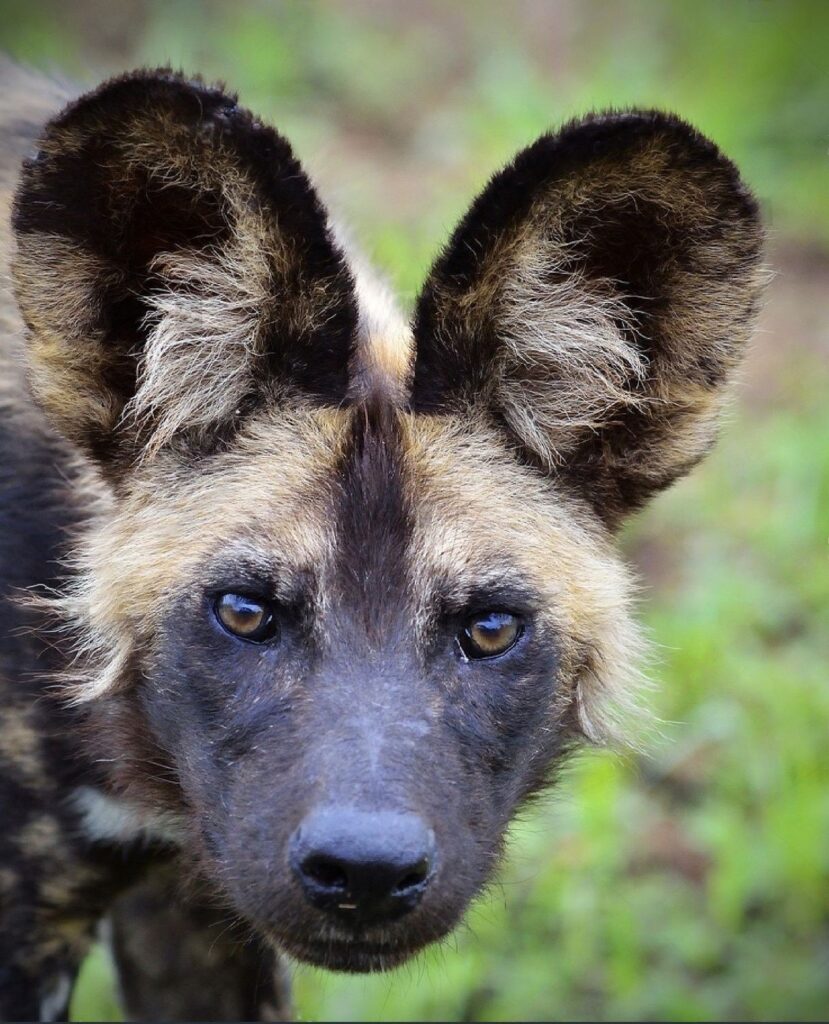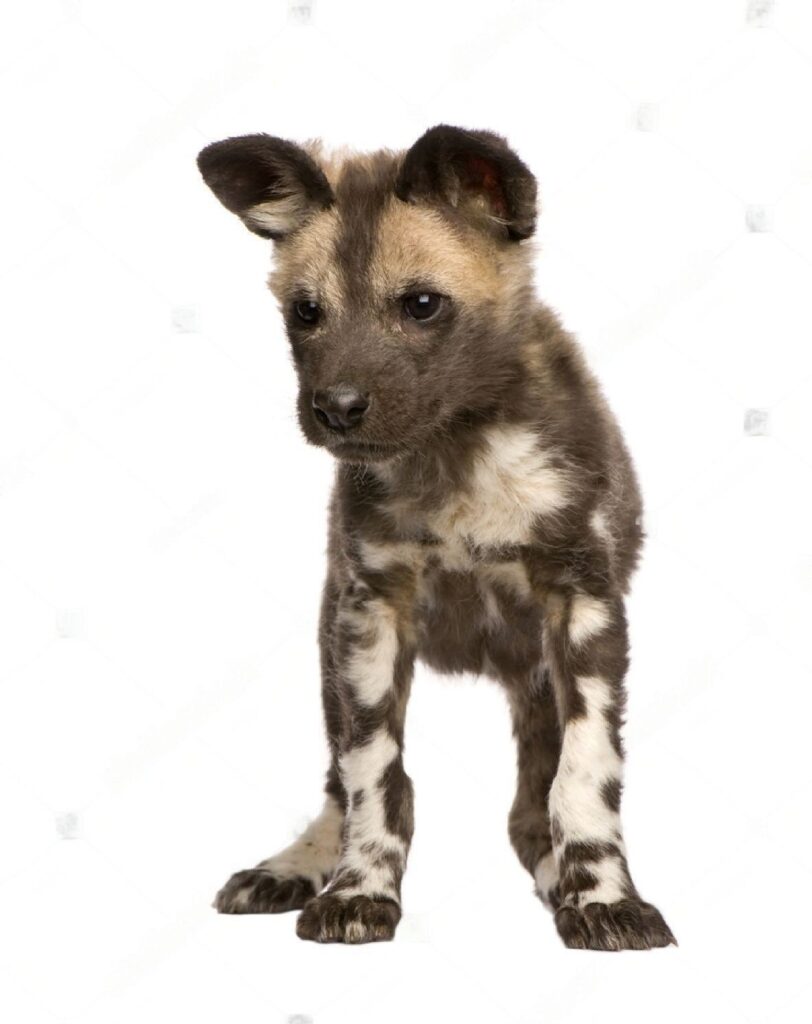The African wild dog, also known as the Cape hunting dog, painted dog or painted wolf, is one of the world’s most endangered mammals and certainly the most endangered of all canids. This species of wild dog only exists in small pockets throughout Africa.
In South Africa and Namibia they are particularly abundant on private game reserves, where they have been reintroduced after becoming extinct in the region during the early 1970s due to excessive hunting and loss of habitat due to human settlement. Here are 10 fascinating facts about these gorgeous creatures that will help you appreciate them just a little bit more!
8 Facts About the African Wild Dog, One of the World’s Most Endangered Mammals
1) There are fewer than 5,000 African wild dogs left in the world

Their numbers have dropped dramatically in recent years to 5,000 due to persecution by man and wild animals, along with habitat loss. Unfortunately, their population can only be saved if they are valued by humans. Although they are not endangered throughout all of Africa, they are increasingly rare in central Africa where poaching is a major problem. Protecting them is especially difficult because they roam far distances and must fend for themselves as adults.
READ ALSO: Why Do Dogs Roll In Dirt? Here Are 10 Possible Explanations
The African wild dog (also known as the hunting dog, or just wild dog) is one of the world’s most endangered mammals.
2) They can run at speeds up to 58 km/h (36 mph)

They can run at speeds up to 58 km/h (36 mph) and have been clocked at a speed of 70.3 km/h (43.5 mph). They are social animals that live in packs called prides. Their gestation period is about 60 days and litters range from 4-16 pups. Females stay with their litter for a week before rejoining the pack and male adults will share babysitting duties. The alpha female is the one who decides where the pack goes next.
The wild dog has very distinctive markings including brown fur on its back and black fur on its stomach which helps them blend into their environment. The wild dog hunts as a group, making coordinated attacks on larger prey such as buffalo or antelope. They will also take smaller prey like rodents or birds if they need to feed themselves or their pup(s).
This species faces many threats such as poaching by humans, habitat loss due to human development, starvation when food sources dwindle, diseases transmitted by domestic dogs, competition with other carnivores like lions and hyenas for food sources or territory, and retaliatory killings when they venture too close to livestock.
3) They live on a diet consisting mainly of red meat

They live on a diet consisting mainly of red meat and may occasionally scavenge from humans. But they hunt mostly during twilight hours and at night. When threatened, wild dogs will bite their prey and then let go to confuse it before chasing it down for the kill. Despite their ferocious looks, they are not typically aggressive towards humans. In fact, they are often tamed quite easily and used as pets in some areas of Africa. The wild dog is one of the world’s most endangered mammals. The largest populations remain in southern Africa and the southern part of East Africa.
4) Although they’re fast runners, they are unable to climb trees

Although they’re fast runners, they are unable to climb trees . In the wild, these animals may live in groups of up to 40 individuals. They often hunt in packs. As a result, it is difficult for humans or other predators to catch them. Unlike other social carnivores such as lions and hyenas that hunt prey by running them down, wild dogs have been observed making as many as 100 false starts before chasing their prey. Once they make a kill, they feed on it communally.
The wild dog has one of the widest distributions of any mammal except humans, with sightings throughout Africa and Asia. Some populations remain in southern Africa and southern East Africa. These dogs can survive in arid regions because they can get enough water from their food: small mammals, lizards, frogs, birds’ eggs, carrion (dead animals), grasses, roots; even fruits like figs or melons when seasonal rains bring them out.
5) They live in packs with complex social systems

Within each pack there is a well-defined hierarchical system. The alpha pair are the only ones that breed and they do so twice a year. The other members of the pack help feed and protect their pups. The adults teach them to hunt as soon as they can walk. Though wild dogs live in packs, females often leave to mate with males from another pack during estrus periods. They have incredibly fast running speeds and will chase down prey for up to an hour before it tires out; when successful, it chases it into brush or over cliffs until it dies from exhaustion or injures itself fatally in the process.
6) In order to avoid crossbreeding with domestic dogs, their population is separated into core areas where they will never come into contact with other canines

There are populations in southern Africa and southern East Africa, but the largest populations remain in southern Africa and the southern part of East Africa. These wild dogs are endangered because habitat loss due to humans encroaching on their territory for livestock grazing and farming has caused a reduction in numbers. Also, as these wild dogs feed on small animals like rodents and insects, many farmers consider them pests that should be eradicated from farmlands so they can plant crops without having to worry about predators eating or harming them. The wild dog also faces other threats such as rabies outbreaks that have killed thousands of wild dog pups over the last few years – all caused by encounters with domestic canines who live near farms.
7) When they need to cool down quickly, they roll around in dust or mud before licking it off

When they need to cool down quickly, they roll around in dust or mud before licking it off. They also seek shade and rest in waterholes during midday. Males are territorial; females roam farther and establish home ranges that overlap with those of several males. The wild dog is one of the world’s most endangered mammals. The largest populations remain in southern Africa and the southern part of East Africa. These packs typically consist of 5-7 animals but may reach 30 members at a time if food is plentiful. In general, wild dogs prey on rodents, small antelopes, hares, porcupines and young baboons when available. They will scavenge as well, but can become pests by killing livestock and poultry
8) These animals communicate via a variety of vocalizations including growls, barks and whines

These animals communicate via a variety of vocalizations including growls, barks and whines. While these dogs are generally shy, they have a reputation for being ferocious hunters with pack numbers numbering from four to thirty animals. All male dogs live together in a pack whereas female dogs, offspring and one or two dominant males all live together with a dominant female. This can lead to intense fights between females where they often bite at each other’s throats.
